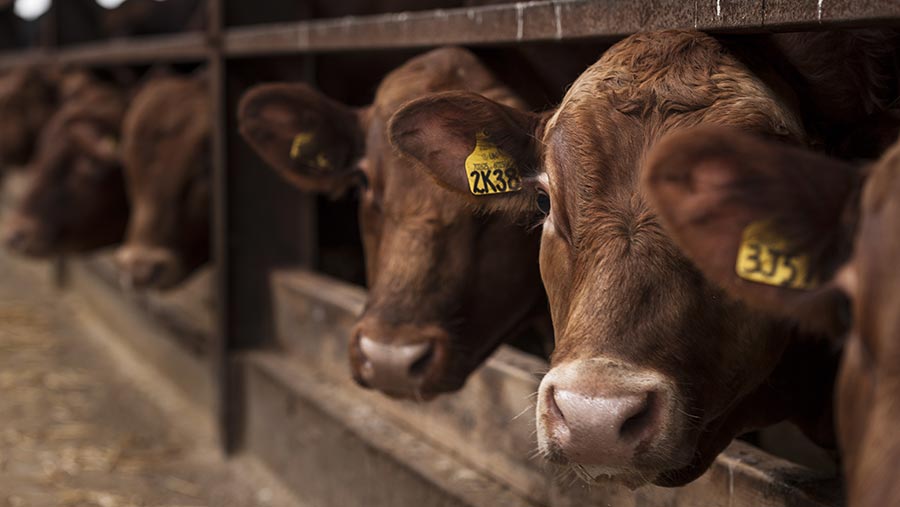Stabilisers feed efficiency value could save £100 an animal
 © Jim Varney
© Jim Varney Farmers using Stabiliser cattle have been promised a new estimated breeding value to select for more feed efficient animals that could realise annual savings of up to £100 an animal.
The net feed efficiency (NFE) estimated breeding value is a biological measure that draw on dry matter intake, liveweight, daily liveweight gain and fat depth. It is expected to hit the market in 18 months.
Studies at the Stabiliser test facility at Wold Farm, East Yorkshire, found the most efficient cattle required 12.1kg DM/day, compared with the least efficient which required 13.7kg DM/day.
Dr Jimmy Hyslop, SRUC beef specialist, equated this to an annual cost benefit of £80-£100 an animal or £21 over a 12-week finishing period.
See also: Beef feed efficiency project aims to improve farm profits
“We know that feeding represents 70% of variable costs in a beef system. Improving feed use can result in major savings,” said Dr Hyslop, stressing that maintenance requirements were also important, as was finishing performance. “Between 60-90% of nutrient use by animals in a suckler beef system is believed to be for maintenance, not growth.
“Variation in feed efficiency has been found to add up to £50-£60 a head in animals finished in the same batch under the same regime.”
This could have a big effect on suckler cow costs and efficiency.
Speaking at the British Cattle Breeders Conference, Dr Duncan Pullar, Stabiliser Cattle Company breed development manager, underlined the high heritability of the trait, calculated at 40%.
“It is about energy and maintenance requirements,” said Dr Pullar. “If we can minimise feed costs to keep animals maintained it will bring savings in the finishing sector, but potentially mean we have more efficient cows.
“Next year we are going to take this from research into practice. NFE promises to be highly heritable and to be employed in breeding programmes.”
